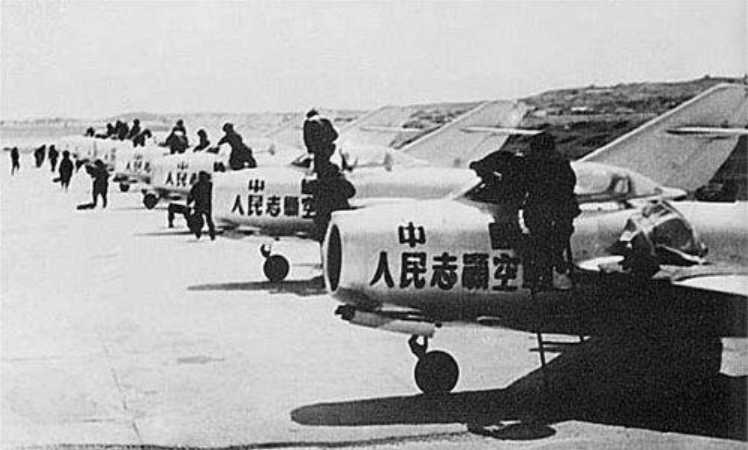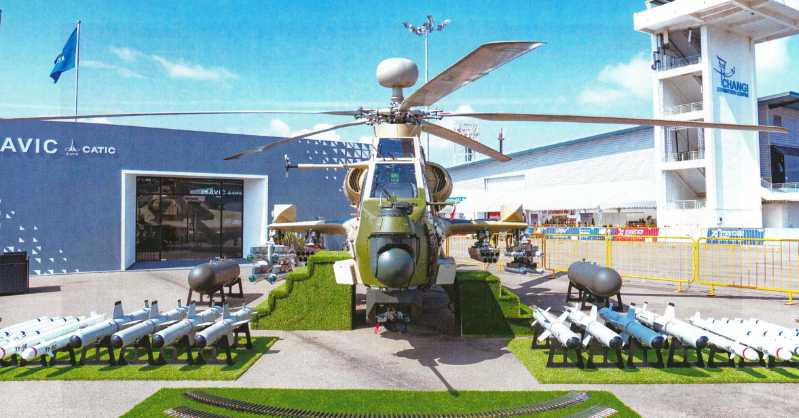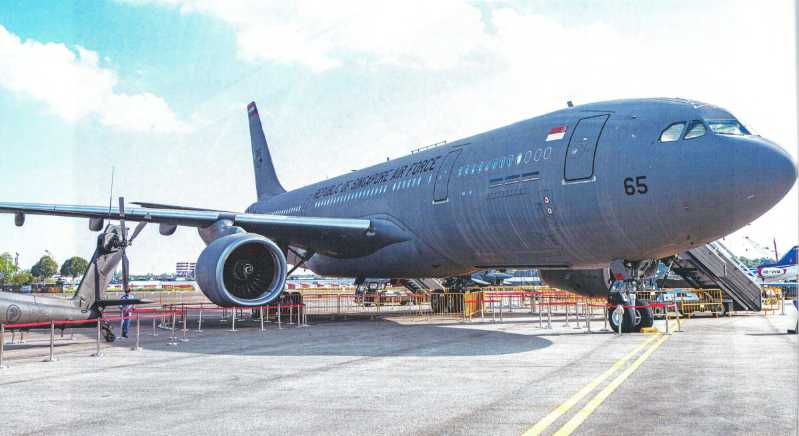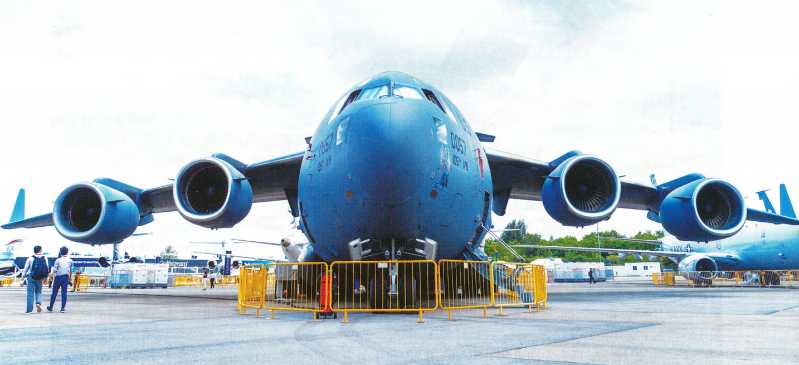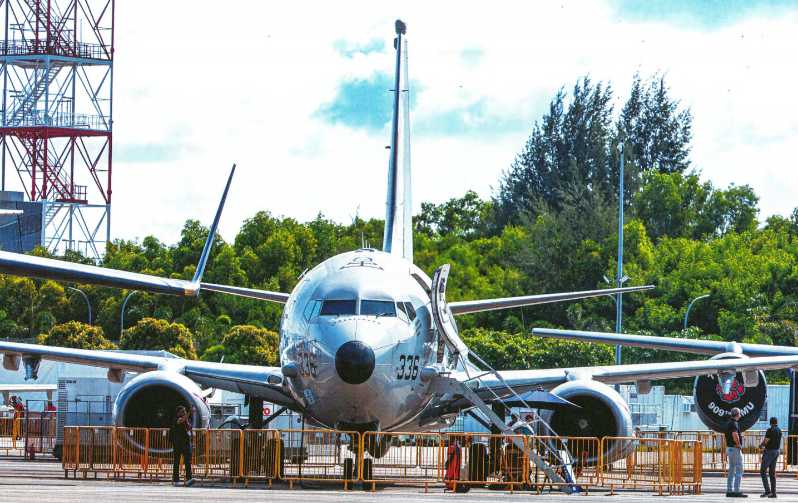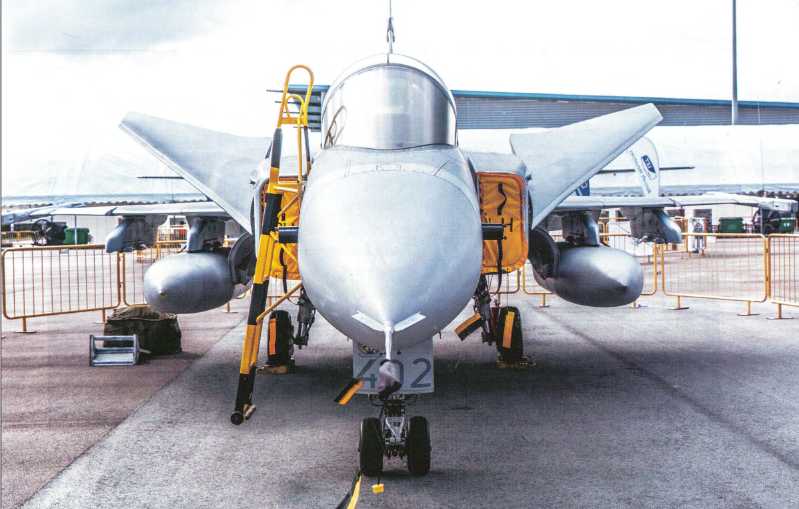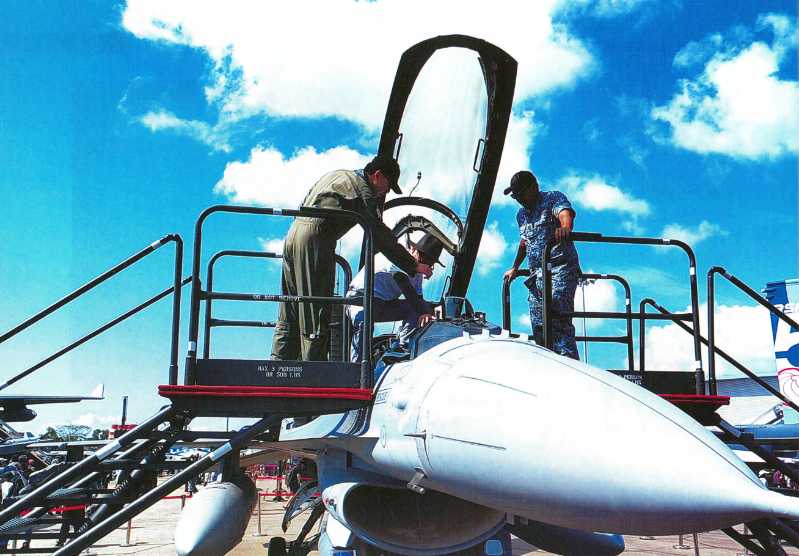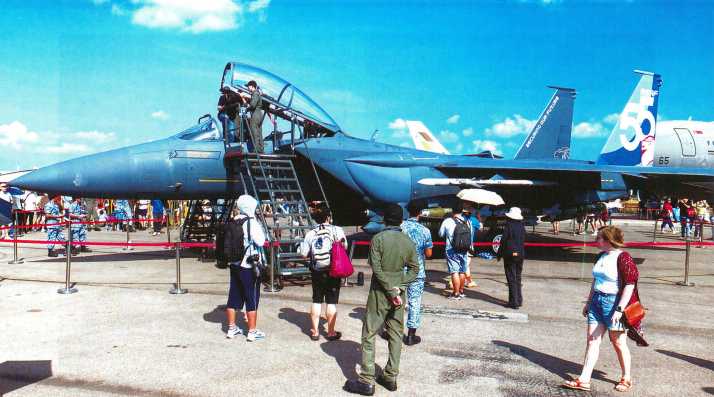The air force of the Chinese People’s Liberation Army was trained and grew up in the great War to Resist U.S. Aggression and Aid Korea. The base of aviation operations is the airport. During the war, U.S. fighter planes controlled the skies over North Korea and destroyed all ground airports. The Chinese and Soviet air forces relied on domestic airports to fight in North Korea. MiG fighter planes with limited combat radius could not move south of Pyongyang.
Since the spring of 1951, the Chinese and Soviet air forces had planned to push the airport forward to North Korea and sent engineering forces to carry out tenacious repairs under the cover of anti-aircraft guns and air force units. My father participated in this task. Due to the fierce bombing by U.S. aircraft, this plan left regrets, but China accumulated important experience in repairing airports during wartime. My father’s efforts and memories can also provide some reference materials for future generations.
During the War to Resist U.S. Aggression and Aid Korea, the air force base was in the northeast, and expanding the airport became a priority
Since the advent of airplanes and air raids in the early 20th century, people have described a country without an air force as "a house without a building." After the founding of the People’s Republic of China, the establishment of an air force was regarded as the focus of national defense construction. The Air Force Command was established in November 1949. A large number of cadres were transferred at that time, among whom only a very small number had studied flight business in the Soviet Union, Xinjiang Air Force, and the old aviation school in the Northeast, and few people knew the construction profession. My father Xu Shen studied civil engineering in Beijing before the Anti-Japanese War. Later, during the war years, because his major was not useful, he worked as a staff officer, propaganda and intelligence. In the summer of 1950, the Northeast Military Region Air Force was urgently established, and the leader transferred him to serve as the deputy director of the Construction Committee based on his old profession. At this time, the Korean War situation worsened, and American planes also dropped bombs on the Chinese side of the Yalu River. The Soviet army also sent air forces into the Northeast. The People’s Liberation Army Air Force urgently established several air force divisions, and airport construction became a top priority.
When the country was liberated, a total of more than 590 airports were received: nearly half were in the Northeast, most of which were simple airports with dirt runways. The airports in the Northeast were basically left over by the Japanese Kwantung Army. Most of them were built according to the runways of several hundred meters required by propeller aircraft, while the Soviet-made MiG-15 fighter jets required a runway of about 1,500 meters and had to be paved with concrete. After my father took office, he immediately participated in the expansion of many airports along the Yalu River to Shenyang. By the end of 1950, he ensured the stationing of the Soviet 64th Air Force and the first aviation division of our army, the 4th Air Division.
Since Stalin was unwilling to make his country’s participation in the war public, the Soviet air force entered China and changed into PLA uniforms. When the outside world had questions, they were called "Russian Chinese Volunteers", and the Chinese side did not make this public for many years. My father was responsible for airport security and often dealt with the Soviet army. According to confidentiality regulations, he could not take photos with them or take pictures of them. Some Soviet officers and soldiers were tall and strong, and they did not fit in our large-sized military uniforms, so they continued to wear their own military uniforms and took off their military ranks, military emblems and various logos. The United States actually knew that the Soviet army had participated in the war, but did not say anything about it to avoid triggering a war between the two countries. It was not until after 1988 that the Soviet Union declassified the fact that its air force participated in the Korean air war in the tide of "openness".
The Korean air war prominently reflects the limited scope of modern local wars. Because the United States was worried about the expansion of the war, it generally did not allow fighter planes to fly into the Chinese side of the Yalu River (there were also a small number of harassment). The Chinese and Soviet air forces could take off to Korea to fight under the relatively safe conditions of their own airports. The aircraft that entered the Korean air war were mainly MiG-15 subsonic jet fighters that entered service in 1948 in the Soviet Union. The standard range was 1,200 kilometers. If the cost of climbing, circling and fighting in the air was counted, the actual combat radius was only 300 to 350 kilometers. In addition, the distance guided by the radar station was short, so it was difficult to take off from the northeast to reach Pyongyang for air combat. Stalin was also worried about the expansion of the conflict. At first, he asked Soviet aircraft not to cross the Yalu River, and later only advanced to the Chongchon River more than 100 kilometers to the south. There was no air cover for the transportation lines and front lines of several hundred kilometers to the south.
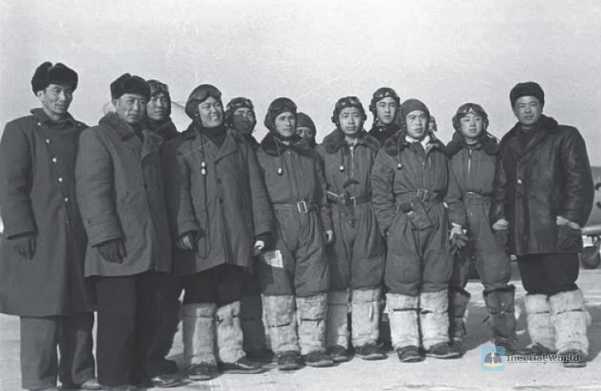
At this time, the combat performance of the US fighter planes was similar to that of the Soviet Army, but the number was superior. In addition, due to the design concept of overseas long-distance operations, they focused on long-range and multi-carrying missiles, and many of them also had airborne radars. Main fighters such as F-84 and F-86 have a range of more than 1,800 kilometers and a combat radius of about 500 kilometers. They take off from bases near Okinawa or Busan, and first fly to Gimpo and Suwon airports near Seoul for refueling. The combat range can cover the entire North Korea. American planes taking off from aircraft carriers not far from the coast can stay in the air for a long time in North Korea. This aircraft performance and the state of airport settings determined that the Sino-Soviet Air Force could only provide limited cover for rear transportation and could not reach the front to support ground forces in combat.
After the Soviet Army entered China, it helped the Chinese Air Force with emergency training. During World War II, the Soviet Union’s top ace Kozhedub (whose record was 62 German planes and 2 American planes) often taught our pilots the essentials of air combat at the airport. My father also learned a lot of knowledge about the construction and use of military airports from Soviet advisers. Although this "master" seemed very enthusiastic to help, it was after all for the interests of his own country. He firmly disagreed to let their planes go south of the Chongchon River in North Korea. Soviet aircraft were also prohibited from approaching the seaside. It was said that they were afraid that the pilots would parachute into the sea and be captured by the US military, leaving living evidence. This led to hesitancy in air combat. Since the Volunteer Army entered North Korea, Peng Dehuai repeatedly proposed to the Central Military Commission to negotiate air support with the Soviet side, and the response was long-term and uncertain. This was actually a manifestation of Stalin’s concerns and hesitation.
The strategic deployment reached by China and the Soviet Union to push the airport forward to the vicinity of Pyongyang
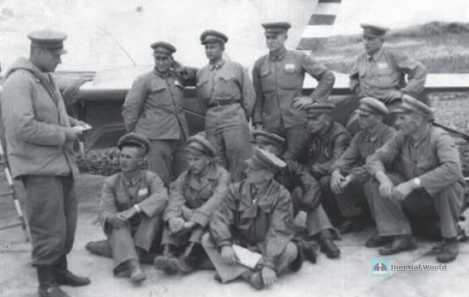
In March 1951, when a large number of domestic strategic reserve troops entered North Korea, my father suddenly received an order to lead the newly formed engineering corps (division-level) to advance about 270 kilometers after entering North Korea to repair Sunan Airport and a nearby backup airport in the northern suburbs of Pyongyang. The strategic intention of the Air Force Command was to push the flight base forward there, so that the combat radius of Chinese fighters could reach south of the 38th parallel, and cover the ground forces to launch a general offensive. At this time, both China and the Soviet Union attached great importance to this task. Not only did the country send an anti-aircraft artillery regiment to accompany them, but the Soviet army also made an exception and sent an anti-aircraft artillery regiment to accompany them into North Korea, and all the members of the regiment wore volunteer army uniforms.
At this time, my father knew that there was only one Air Force 4th Division in the domestic air force that could fight (with only dozens of fighter jets), and the rest of the divisions were still in training. He wondered why he took such a big risk to build an airport near Pyongyang? For many years afterwards, he was puzzled by this order. In 1992, as a visiting scholar from China, I went to Stanford University in the United States to participate in the identification of the former Soviet archives that were declassified and sold by Russia. I also saw some published archives from China and learned the whole story.
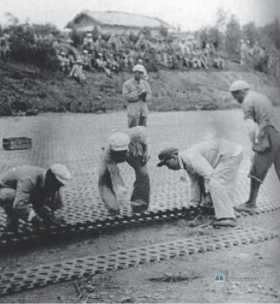
In January 1951, the Chinese and North Korean troops won the third battle and occupied Seoul. The Central Military Commission was ready to launch the next offensive. To this end, they wanted to build a forward airport in North Korea. The Air Force Command sent a liaison group to the Volunteer Army. Deputy Commander Chang Qiankun, who had studied aviation in the Soviet Union during the Great Revolution, went to inspect. At this time, Stalin saw that the United States did not want to expand the war, and was more active in the issue of air support. On February 4, Peng Dehuai and Kim Il-sung agreed during their talks that once the air force and airports were ready, they could launch a general offensive in May. On March 1, China sent a telegram to Stalin in the name of Peng Dehuai himself, and then drafted by Zhou Enlai in the name of Mao Zedong, emphasizing the difficulty of not having air cover in North Korea. The telegram also stated that the Chinese Air Force was scheduled to send ten regiments to participate in the war between April and May, but there was no available airport in North Korea, and the airport could not be built without reliable air cover (it would be bombed if it was built). China very much hoped that the Soviet Air Force would perform cover missions over the airports on the Pyongyang, Wonsan Line and north of it to protect the construction of the airport.
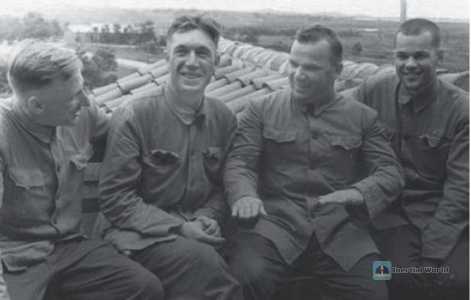
Two days after receiving the telegram, on March 3, Stalin replied to Mao Zedong, agreeing to send the 151st and 343rd Soviet fighter aircraft divisions under the command of General Belov to fight in North Korea. He also said that no less than four concrete runway airports should be built, and the Soviet Union would provide anti-aircraft guns with sufficient shells for cover. Then, after consultation with the North Korean side, China decided to build two jet airports near Pyongyang and four more simple airports to the east and south. Seeing these declassified archival materials, the author learned that the mission carried out by my father was actually agreed upon by the top leaders of China and the Soviet Union, and the Soviet Army’s ability to send an anti-aircraft artillery regiment to cover it was to implement the decision of the Soviet Supreme Commander. According to my father’s recollection, he personally felt that there was almost no distinction between the front and the rear on the Korean battlefield on the first day of entering North Korea. They had heard from the first batch of comrades who participated in the war that the enemy planes were rampant, but they felt that they were accompanied by Soviet anti-aircraft guns and anti-aircraft machine guns, so they should not be afraid of bombing, so they marched by car during the day (a large amount of engineering equipment also had to be towed by cars). Soon after crossing the Yalu River, American planes targeted the convoy. Since Chinese and Soviet jet planes had not yet crossed the river in large numbers to participate in the war, the US military also carried out ground attacks with propeller P-51 "Mustang" fighters. Since the main force of the Kuomintang Air Force during the War of Liberation was also this type of aircraft, my father and many comrades around him could tell at a glance that this was a familiar old enemy. However, the technical level of American pilots was much higher. Several "Mustangs" could fly over and shoot at the treetops, and the air waves even washed away the leaf camouflage on the car. Those who had been in battle for a long time in China had never seen this posture, and many of them were stunned and lay on the ground with their heads down. The anti-aircraft machine guns in the convoy were firing hard at this time, but they failed to shoot down the enemy planes due to insufficient training. After all, American pilots bully the weak and fear the strong, so they took off when they saw the fierce anti-aircraft firepower. After this on-the-spot lesson, the convoy dispersed and hid on the spot, and changed to traveling in batches at night, and soon arrived at Sunan, 20 kilometers north of Pyongyang.
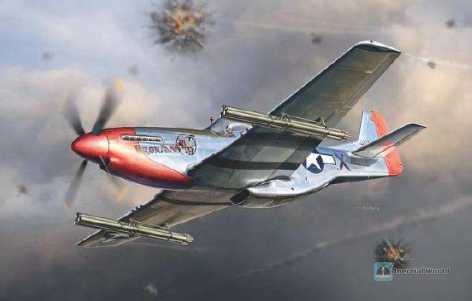
After the convoy arrived, my father went to Pyongyang to contact the relevant departments of the North Korean side and the Volunteer Army stationed troops. The thousands of tons of cement and other building materials required were to be transported from China by the Railway Corps. My father and the commander of the Volunteer Army Railway Corps Liu Juying had known each other as early as the "December 9th" Peking Student Movement, and they had worked together during the War of Liberation. After he went there, he was arranged very enthusiastically. Peng Dehuai once highly praised Liu Juying’s contribution in the War to Resist US Aggression and Aid Korea and even said that the Railway Corps could account for half of the credit (the phrase "Logistics accounted for half of the credit" is more widely circulated). Liu Juying said modestly that our Railway Corps’ credit accounted for at most 10%.
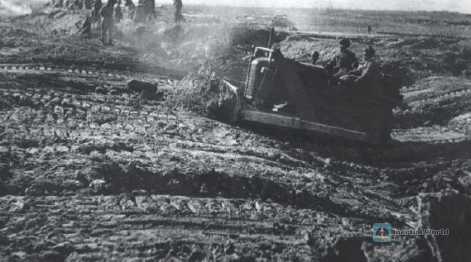
After arriving in Sunan, the troops immediately arranged for two important tasks: air defense and anti-espionage. The focus of the bombing by American aircraft was on transportation lines, stations and towns. They generally patrolled and monitored the vast villages and attacked suspicious targets. They could not bomb all the scattered houses of the villagers. Therefore, each unit lived in the homes of the Korean villagers, and the vehicles tried to enter the caves as much as possible. After settling in, they immediately dug air-raid shelters and air-raid trenches and prepared fake When a single US military "duty plane" frequently flew overhead for reconnaissance, all personnel stayed indoors. If anyone was walking outside or even a dog was seen, the US plane would often swoop down and strafe. If there was an alarm of a large US aircraft group attacking, all personnel would enter the air-raid shelter and come out after the bombing, because it would be very uncomfortable to stay in the dark and damp shelter for a long time. My father repeatedly said with a little pride: "I am not afraid of planes. I didn’t sleep in the air-raid shelter for two years in North Korea. I slept on the pits of my fellow Koreans." According to him, the number of casualties of the Engineering Corps after entering North Korea was only 5%, indicating that good air defense can greatly reduce losses.
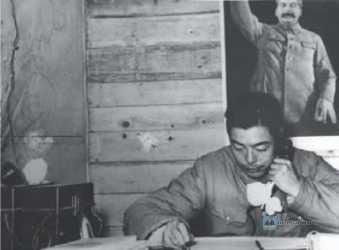
One of my father’s feelings after entering North Korea was that "there were too many spies". Some were left behind when the US and South Korean troops retreated or were bought later, and some were airdropped or shipped by sea. The Volunteer Army’s war history records that more than 10,000 enemy spies were eliminated (including captured) during the war. My father said that when he just moved into the village, someone fired a signal flare at night to guide the enemy planes to bomb, and he saw a colored signal flare rising behind his house. At this time, I The enemy sent people with signal guns nearby. When they saw the enemy spies firing signal flares, they fired the same color flares into the open area, making it difficult for the enemy planes to distinguish between real and fake targets. The guard squad squatted in the village for several nights and captured a North Korean spy. My father listened to the translator’s interrogation and learned that this guy was a local and was commanded by his superiors in Pyongyang. He was rewarded with a bushel of millet for each signal flare. After interrogation, these arrested people were handed over to the North Korean public security. After a period of arrests, the activities of enemy spies decreased, but according to regulations, Chinese personnel were not allowed to go out alone and had to carry weapons when they went out at night.
After the engineering corps repaired the air defense facilities, they began to work intensively, stopping during the day and working at night to prevent bombing. However, the large-scale changes in the topography of the airport construction area could not be hidden from the enemy planes in the air. Coupled with the spy reports, the US military immediately grasped the construction of the airport. If these airports were built, the Chinese Air Force would be able to extend its combat radius to the front line and even south of the 38th parallel. The US side could not tolerate this for strategic reasons, and its air force listed North Korea’s airports as key bombing targets along with Jiangqiao and the railway line.
Compared with these main bombed targets, Jiangqiao and the railway are narrow lines, which are difficult to hit by bombs. After being bombed, the engineering personnel and railway soldiers often repaired them in a few hours and they were open to traffic. The airport target is a large area. It takes months to level the foundation and pour concrete. It is easier for enemy planes to bomb it, but it is very troublesome to repair it on the ground. Because of this, the "iron transportation line" behind the Volunteer Army could "not be broken or destroyed by bombing", and most of the time it was "broken during the day and open at night", while the construction of the airport was described as "not being built as fast as being bombed", and the engineering personnel and anti-aircraft artillery units tried their best but still failed to repair it.
The cycle of repairing at night and bombing during the day led to the cessation of the construction of airports north of Pyongyang
From April 1951, when the Volunteer Army launched the spring offensive, i.e. the fifth campaign, the two airports north of Pyongyang also started intensive construction, and when there were few mechanical equipment, they mainly relied on people to dig and carry on their shoulders. Because a large number of laborers were needed, the 47th Army, i.e. the old 359th Brigade where my father was, was also transferred to the construction. In the late stage of the fifth campaign, the situation was tense, and the army was urgently transferred to the front line. The 23rd Corps, i.e. Dong Qiwu’s unit, which was reorganized from the Suiyuan Uprising, transferred some people to participate in the construction. My father said that some of the old officers in this unit who had not been reformed were very negative and lay around all day without doing anything. The soldiers were mainly led by the political commissar and other political workers to work on the construction.
After the construction of the airport began, American planes began to sabotage it regularly. The method was that planes would monitor and harass the air day and night, fighter-bomber groups would conduct a small-scale bombing of the runway under construction every week, and B-29 "Super Fortress" bomber groups would conduct a saturation bombing of the entire airport area every month. At that time, the Soviet Union’s promise to send the Air Force to provide cover was not really fulfilled. Soviet planes only came a few times. It is estimated that Stalin had new concerns. To fight against enemy aircraft, anti-aircraft artillery units relied on air shooting. The Chinese and Soviet anti-aircraft artillery units were equipped with Soviet-made 85mm and 37mm anti-aircraft guns. The former mainly hit targets from 3,000 to 8,000 meters, and the latter mainly hit targets from several hundred to 4,000 meters. In addition, each regiment was equipped with a batch of 12.7 mm anti-aircraft machine guns to shoot low-altitude targets to protect the anti-aircraft guns. The air defense operations to defend the airport north of Pyongyang lasted for more than half a year. Actual combat proved that the anti-aircraft gun group could drive away the enemy single aircraft and small groups and achieve some results in shooting down, but it was unable to deal with large groups of high-altitude aircraft. In particular, every time the US military came in a large formation of dozens of B-29 bombers, it could cause "turn-over" type of destruction. This large aircraft produced in the late World War II was still the main force of the US bomber fleet at this time (it was replaced by B-52 in the late 1950s), with a normal bomb load of 7 tons. In a large bombing, hundreds of tons of bombs would fall densely on the airport area, and the bombs would be dropped horizontally at an altitude of more than 8,000 meters, passing by. This flight altitude is the upper limit of the 85 mm anti-aircraft gun. The speed of the projectiles shot up is greatly reduced and the accuracy is very poor, making it difficult to shoot down the B-29.

After each major bombing, the runway was full of craters. In order to prevent emergency repairs, many time bombs were dropped, which would explode on a daily basis. After the bombing, the construction team must first remove the time bombs, because some have been drilled into the ground and need to be carefully searched and dug out. These bombs are all thousand-pound bombs, and usually two squads are required to drag or lift them to the off-site detonation area. The danger is greatest when dragging. My father once recalled with a heavy heart that a dozen soldiers were dragging bombs under the guidance of the instructor and suddenly exploded. He heard the loud noise and rushed over but could not see the human body. He only saw a lot of blood and flesh mixed with rags scattered within a hundred meters around, as well as scattered fingers and toes. Although everyone was very sad, they were used to seeing death during the war, and then continued to work. The biggest advantage of the Chinese army in that era was bravery and fearlessness of sacrifice.
During the airport repair process, the situation on the Korean battlefield changed greatly. After the end of the fifth battle in June 1951, the two warring parties reached a stalemate and the idea of a ceasefire emerged. In July, the armistice negotiations came to a standstill just one month after they began. The Volunteer Army was preparing for the sixth battle to counterattack southwards, and also hoped that the Air Force would move forward, so the cycle of "bombing and repairing" at the airport construction site was still going on.
In October, my father rushed back to Shenyang and reported the difficulties in the construction of the airport to the Air Force leaders. Commander Liu Yalou, Deputy Commander Chang Qiankun and the leaders of the "Air Joint Division" composed of China, the Soviet Union and North Korea also held a meeting to study whether it was necessary to proceed with this project. After research, they reached a consensus that the airport would not only be difficult to build under such fierce bombing by enemy aircraft, but even if it was built, the Air Force would not be able to move in. At this time, the strategic intention of the Central Military Commission had changed, and the plan for the sixth battle was cancelled. The Volunteer Army switched to a defensive position to resist the enemy’s "Autumn Offensive" and was no longer prepared to push the air combat range forward to South Korea.
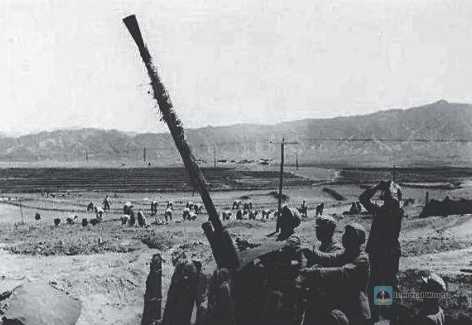
According to new strategic considerations, in November, the construction of airports near Pyongyang and several other locations in North Korea was ordered to stop, and the 23rd Corps that entered North Korea for construction was transferred back to China and reorganized into the 69th Army. After my father returned to North Korea, he led the engineering corps to withdraw to the Yalu River for rest and participated in other tasks. It was not until after the armistice that Sunan Airport was rebuilt and became the international airport of the capital of North Korea.
I was still moved at this matter. With our professional level at that time, we could not make that level of inquiry.
The captured American pilots all had relatively high academic qualifications and strong professional and technical capabilities. Most of them had a sense of pride in their high living standards. They did not care about politics and only pursued enjoyment. What impressed my father the most was that he had talked with a pilot who graduated from Cornell University and found that this person didn’t care much about being captured. He said that he was shot down and taken prisoner when bombing Germany in World War II, and he just hoped that the Chinese would treat him better. According to them, they would fly back to Okinawa to spend the night at night. As long as there was no flight mission the next day, they would indulge themselves in bars and karaoke halls all night. These American pilots usually put their lives first when fighting. It is said that at first they implemented the "day system", that is, they could return home after participating in the war for a few months, and during this time they would just muddle through and were unwilling to perform dangerous missions. Later, their superiors switched to the "point system", that is, they would get high scores for performing difficult tasks or achieving functions, otherwise they would get low scores or even no scores, and they could not return home if they did not meet the score. My father saw that the depressed mental outlook of the American pilots was incomparable to the high morale of the Chinese and Soviet air force pilots, and he also understood the role that our spiritual advantage could play.
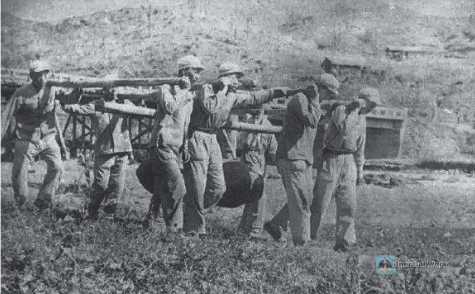
My father had been interacting with Soviet soldiers before and after entering North Korea. He felt that they had a bold spirit, especially the old pilots who had experienced the Great Patriotic War. They were very brave and skilled in air combat. However, the Soviets often showed a Great Russian chauvinism. He had an unhappy experience when he worked with a Soviet adviser with the rank of colonel for a long time. This person was responsible for the construction of the airport during the Great Patriotic War and had considerable experience, but he often said arrogantly, "You are all people who have never fought a big battle." This made my father very unhappy, because at that time, it was difficult to refute the emphasis on learning from the Soviet army.
Once, he received a notice to go to Pyongyang for a meeting at the Korean People’s Army Air Force Command. My father said that there were US military aircraft on duty in every airspace during the day. If they saw a single car and a few people, they would shoot. If they found a large group of people, they would notify the fleet to bomb by radio, so they could only leave at night. The Soviet adviser actually said, if you are afraid, wait until night, I will leave first. What the old soldiers of the war years could not tolerate most was being laughed at for being timid. My father immediately said that if you did not use the air combat in the Korean battlefield, the Chinese army, which had just embarked on a modern war, would open a window to the outside world, and see many new things from the American opponents and the Soviet friendly forces, which would be beneficial to the construction of their own army.
My father said that when he was building the airport, he had seen some American pilots who were captured for shooting down and participated in the interrogation. At that time, some interrogations were divided into two steps. The Chinese side would first ask about the number of aircraft at the US military base, the next bombing target and other practical issues, and then hand them over to Soviet personnel for interrogation. Most of the Soviet participants were intelligence officers, pilots and technicians, and most of the questions they asked were highly professional, such as the various performance of American aircraft, production conditions and the next development of fighter jets. When my father recalled this incident in his old age, he still sighed that with our professional level at that time, we could not do that level of interrogation.
The captured American pilots had relatively high academic qualifications and strong professional and technical capabilities. Most of them had a sense of pride in their high living standards, and they did not care about politics but only pursued enjoyment. What impressed my father the most was that he had talked with a pilot who graduated from Cornell University and found that this person didn’t care much about being captured. He said that he was shot down and taken prisoner when bombing Germany in World War II, and he just hoped that the Chinese would treat him better. According to them, they would fly back to Okinawa to spend the night at night. As long as there was no flight mission the next day, they would indulge themselves in bars and karaoke halls all night. These American pilots usually put their lives first when fighting. It is said that at first they implemented the "day system", that is, they could return home after participating in the war for a few months, and during this time they would just muddle through and were unwilling to perform dangerous missions. Later, their superiors switched to the "point system", that is, they would get high scores for performing difficult tasks or achieving functions, otherwise they would get low scores or even no scores, and they could not return home if they did not meet the score. My father saw that the depressed mental outlook of the American pilots was incomparable to the high morale of the Chinese and Soviet air force pilots, and he also understood the role that our spiritual advantage could play.
My father had been in contact with Soviet military personnel before and after entering North Korea, and felt that they had a bold spirit, especially the old pilots who had experienced the Great Patriotic War. They were very brave and skilled in air combat. However, the Soviets often showed a Great Russian chauvinism. He had an unhappy experience when he worked with a Soviet military adviser with the rank of colonel for a long time. This person was responsible for the construction of the airport during the Great Patriotic War and had considerable experience, but he often arrogantly said, "You are all people who have never fought a big battle." This made my father very unhappy because it was difficult to refute the emphasis on learning from the Soviet army at that time.
Once, he received a notice to go to the Korean People’s Army Air Force Command in Pyongyang. My father said that there were American aircraft on duty in every airspace during the day. They would shoot at single vehicles and a few people, and would notify the fleet to bomb them by radio when they saw a large group of people, so he could only leave at night. The Soviet military adviser actually said, "If you are afraid, wait until night, I will leave first." The most intolerable thing for old soldiers in the war years is that others laugh at their cowardice. My father immediately said, "You are not afraid of death, so why should I be afraid of death?" So the two of them, along with the translator, the guard and the driver Sun Fenglou (who often visited my home in the following years), drove to Pyongyang in a jeep. Before they had gone a few kilometers, an American F-80 fighter plane spotted them and flew over. This type of aircraft was nicknamed "Oil Picker" by the Volunteer Army because of the two fuel tanks on the wingtips. Its advantage was low-altitude attack. When they saw the enemy plane rushing down, my father and his friends immediately stopped the car on the side of the road and jumped into a dry canal in a rice field to avoid the attack.
According to my father and some of the elders of the same generation, as long as there were terrain features to use, a single enemy plane would generally not be able to hit them. After all, they had been through many battles. When the "Oil Picker" aimed and strafed at low altitude, if they lay still in the open ground or ran around, they would be in great danger. Therefore, they had to keep an eye on the angle of its swooping down, hide in the ditch behind the shelter and let the earthen ridge block the bullets. The enemy plane changed its angle and rushed down again. They quickly lay on another reverse slope and continued to play "hide and seek" with it. The American pilots dived several times but failed to hit anyone, so they fired a burst of shots at the jeep and flew away. My father and his party checked the car and found that although there were several bullet holes on it, the engine and fuel tank were fine, so they drove back immediately. After that, the Soviet adviser’s attitude became much more humble. Perhaps he knew that the intensity of the Korean War experienced by China was not inferior to the Soviet-German War to some extent.
When my father dealt with the Soviet anti-aircraft artillery regiment assigned to him, he felt that their standardized management was relatively strict, and their combat level was similar to that of the Chinese side. However, the treatment of their officers and soldiers was very different. Although they had political education, they only read Stalin’s "Problems of Leninism" in a dogmatic manner, which was probably difficult to listen to. During the "August 1st" Festival, each cadre and soldier of our army was given 2 yuan (20,000 in old currency), which could buy a hen according to the purchasing power at that time. My father, as the party secretary, presided over the discussion on whether to give it to the Soviet regiment. Everyone thought that since they fought with us, they should be treated equally. After the holiday allowance was distributed according to the number of people, the Soviet army only gave it to the officers, and the soldiers did not get any. My father asked the commander of the Soviet army why he did this. He said nonchalantly that our officers were "life sentences" and had been in the army for many years, so they should be taken care of; no matter how hard the conscripts were, they could go home in three years, so why should we give them care! Seeing that the "big brother" who was a role model for China at that time was in this style, wouldn’t their revolutionary theories be just verbal?
Soon after, Mao Zedong proposed that the Soviet army’s science and technology should be learned in full, the administrative system should be learned half, and the political work should not be learned. My father and many colleagues felt that this was right! Fortunately, the army led by the Communist Party of China did not copy the Soviet army’s model of building the army, otherwise it would definitely go astray.
When building the airport in Guicheng, a new problem of night bombing was encountered
After November 1951, the Sino-Soviet-North Korean "Air Joint Command" still considered pushing the airport to the south of the Yalu River to expand the combat radius of the aircraft covering the rear transportation line. The airports previously built in Qinchuan and other places more than 100 kilometers away from the Yalu River were destroyed. There was a small plain in Guicheng nearby with good terrain and a certain foundation for construction. After my father and other relevant personnel conducted an investigation here, the engineering team entered the area for construction after the thaw in the spring of 1952. The Kusong in North Korea is located in the "MiG Corridor" where the Chinese and Soviet air forces constantly launched attacks. At that time, the US bombers were all propeller-driven, and they were afraid of being attacked by jet fighters, so they dared not come easily during the day. However, after the US military discovered that the construction of the Kusong Airport had begun, they repeatedly used the most advanced F-86 fighter groups to cover the B-29 bomber groups to come for air strikes. Because it is close to the Yalu River, the Chinese and Soviet air forces responded with large formations when they found the enemy aircraft groups coming. My father said that he often saw air battles overhead during this period. Once, a large formation of 64 fighters appeared on our side, and the US military used fighters to cover them, allowing the B-29 bombers to hastily drop bombs and run away. The bombing of the construction area was not as frequent as in Sunan, and most of the bombs dropped, including time bombs, were not accurate, and the damaged runways could be repaired in a short time.
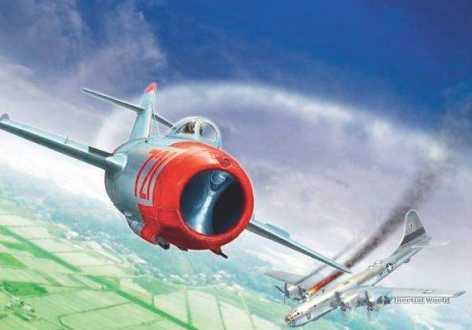
To 1952 In the autumn of 1945, the concrete main runway of Guicheng Airport was basically completed, but it was bombed by American planes at night with "cross-cut" bombing. My father went to see the impact point with Soviet advisers and Sino-Soviet technicians and found that the bombs could be dropped accurately in the dark, which must be guided by electronic equipment. When the atomic bomb was dropped on Nagasaki in July, radar detection and positioning technology was used, and it was further developed at this time. Soviet fighter planes during the Korean War did not have effective night combat capabilities, and the Chinese level was even worse. Night air defense mainly relied on anti-aircraft guns, and it was difficult to aim in the dark. Under such technical conditions, it was difficult to stop the bombing of American planes.
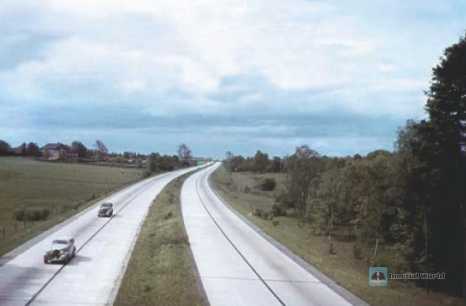
According to my father’s recollection, it was also difficult for American planes to aim at the night bombing of Kusong Airport. It could not be like the "turned over" runway in the north of Pyongyang. The "cut waist" damage could not be repaired quickly, but the superiors had new ideas. At the end of 1952, the five-star general Eisenhower of the United States was elected president and clamored to expand the war. The Volunteer Army carried out unprecedented anti-landing combat preparations. At this time, the Soviet Union was worried about stimulating the United States, and the air attack line was retracted from the Cheongcheon River to the Yalu River. There was no urgency to push the airport forward. In addition, with the arrival of winter, water turned into ice, and the pouring of concrete and other work could not be carried out, so the construction of Kusong Airport came to a halt. 1953 In the spring of 1950, the Korean armistice negotiations made new progress. The Air Force believed that it was no longer necessary to repair the airport in North Korea, and my father was ordered to return to China. The Engineering Corps was used to expand the second-line airport on the Chinese side of the Yalu River. For example, my father participated in the expansion of Dabao Airport. Han Decai, the second-class hero of the 15th Air Division, took off from this airport and shot down the double ace Fisher of the US Army. As for the airports in North Korea, they were mainly built by the North Korean side after the official armistice in July 1953.
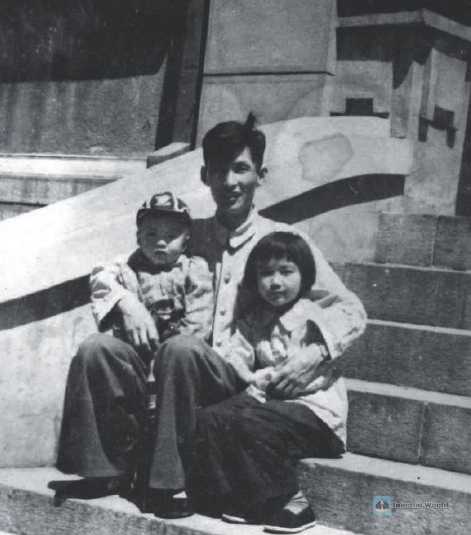
My father always had regrets about entering North Korea to build airports during his lifetime. His superiors still affirmed his work and awarded him a second-class medal. After the Korean armistice, my father was ordered to further improve the airport group on the right bank of the Yalu River, and was subsequently transferred to Beijing to serve as Deputy Minister of the Air Force Construction Department. According to the needs of the military struggle at that time, the construction of military airports focused on Liaoning and Fujian. Forces were also drawn to build airports in Yushu, Qinghai and Dangxiong in the north of Lhasa. At that time, the national finances were very difficult, and the compensation for land acquisition for airport construction was very limited, with the standard being only three years’ harvest price. Since the beginning of liberation, the uniforms of the Air Force have long been yellow tops and blue pants. Some local cadres complained when they saw those wearing Air Force uniforms: "Here comes ’blue down and yellow up’, either expropriating land or demolishing houses." Despite the complaints, the general public still took the overall interests of the country into consideration, and there was no news of any "nail households". In view of the lessons learned from building airports in North Korea, my father and some relevant leaders of the Air Force have long considered the problem of how to repair airports and maintain aircraft takeoffs and landings in the face of bombings during wartime. Before World War II, Germany was the first country in the world to build a highway network. In the later period of the war, most of its airports were continuously bombed by Allied aircraft, but the long highway lines could not be completely destroyed. The German Air Force could still use highways to ensure aircraft takeoffs and landings when it completely lost air superiority. After World War II, many countries learned this method and used highway networks as airport runways in wartime when building highway networks in peacetime. my country’s air force has also studied this experience, but due to the country’s limited economic strength, the country has not had the financial resources to build highways for decades, and can only imagine other makeshift ways to solve the problem of temporary runways during wartime.
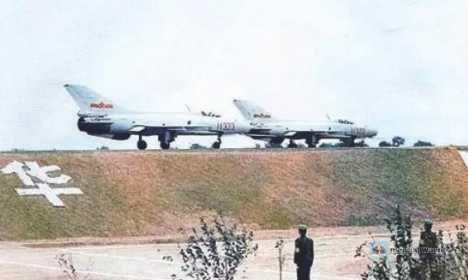
After the reform and opening up, with the rapid development of my country’s economy, the construction of the first domestic highway, Shenyang-Dalian Expressway, began in 1984. During the design, a section was reserved as a war-ready runway. In 1990, this highway was opened to traffic, and it was publicly reported that there were many straight sections on the road that could be used for aircraft takeoff and landing. My father, who was retired at home at the time, felt very relieved when he saw the news. Today, the length of my country’s highways has surpassed that of the United States and ranks first in the world. In this construction, it will be a task of national defense to combine the military and civilians, and peace and war. It is also a lesson that people can learn from the history of the War to Resist U.S. Aggression and Aid Korea.


